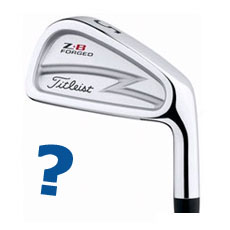Why Use Forged Irons

Golfers of all capabilities require a set of irons in order to move the ball a short distance to the green. Irons vary in number from 1 through 9. A lower number on the iron denotes a longer length of shaft. Irons which would be higher than 9 in their number are typically wedges. The format and construction of an iron is very important. How a golf club is built determines how it will respond to a player’s swing.
Many players find irons, especially the lower numbers, difficult to hit due to their small “sweet spot”. This “sweet spot” is a target area located at the center of gravity on the club head which will result in the greatest, most predictable response from the ball. Advanced golfers who have low handicaps can play with any iron, no matter how small the target area on the club head is. Irons for these players include blade irons and forged golf irons.
Forged golf irons are those which are shaped out of solid pieces of metal, rather than being cast from a mold. There are many advantages offered by golf irons which have been forged over those which were cast.
Cast irons usually result in cavity backed clubs, but there are some forged cavity backed clubs available. Their name comes from the hollow in the back of the club head. These irons have less weight in the center of the club head; most of it is located along the outer edges of the head. The result is an iron which is better for a beginner or weekend golfer to use since the weight is better proportioned to give the club a greater space from which the ball can be hit to produce desirable results. Examples of cavity backed forged golf irons include: Adams Idea Pro Forged Irons, MacGregor MT Forged Irons, Bridgestone Precept J33 Forged Irons, and Yonex ADX Tour Forged Irons.
Blades are another choice for a forged iron club head. Also known as muscle backed irons, this is the oldest design for golf irons, and it is the preferred choice of experienced golfers. Unlike cavity backed irons, blades have their weight evenly distributed throughout, and as a result they have a smaller center of gravity. Those with low handicaps are better able to take advantage of the smaller sweet spot of these irons, which are more likely to be forged rather than cast. Some examples of forged blades include: Mizuno MP-14 Forged Irons, Wilson Staff FG17 Forged Irons, Nike Forged Blades Irons, Titleist ZM Forged Irons, and TaylorMade 300 Forged Irons.
Besides the form of the club head, there are other things golfers should take into consideration when choosing a forged iron. One of these is the material used in the shaft. There are two main choices for shaft material, each with its own advantages and disadvantages. Steel is a popular option for many due to its rigidity and strength. The other main choice for shaft material is graphite. A large number of golfers prefer these over steel because graphite is lighter in weight. Less weight in the shaft makes these irons easier to swing. This attribute makes graphite shafts an especially good choice for women, youth, and senior players. In most cases, a player has the option to customize his forged irons with either steel or graphite shafts. Personal preference in the feel and response of the club will direct the golfer to choose the best shaft for his forged irons.
Forged irons have a solid construction and are most often have blade club heads. Beginner golfers might be better served by using cast irons which are cavity backed. These irons are best for those with high and mid level handicaps. A beginner could even benefit from a forged cavity backed iron which has a larger sweet spot than a blade iron. These irons offer more forgiveness even if the ball is not perfectly hit off the club head.
Experienced golfers are more likely to choose and be able to play well with the more solid heavier forged blade irons. Those who have lower handicaps will be best able to control the ball from these irons. Whether a choice of a blade or cavity backed forged golf iron is made, it will make a difference in the distance and control the player has, and the decision should be made based upon the player’s ability and personal preference in the feel and response of a forged golf iron.